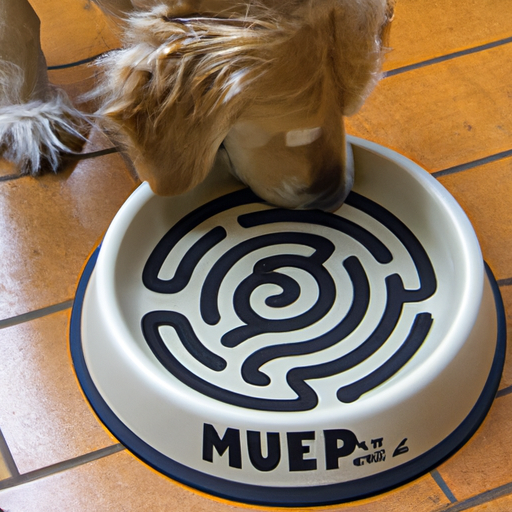Understanding Your Dog’s Eating Behaviour
Typically, dogs are known to devour their meals quickly. This is a primal instinct that traces back to their ancestors, who had to eat as quickly as possible to avoid predators or competition. However, in your domestic setting, this rapid eating can lead to serious health issues like choking, gastric dilatation-volvulus (GDV), and obesity. As a caregiver, your role is key in helping your furry friend develop healthy eating habits.
Why Slowing Down is Important
Eating too quickly can lead to various health problems:
- Choking: Your dog can choke if they swallow food without chewing properly.
- Gastric dilatation-volvulus (GDV): Also known as bloat, GDV is a serious condition where the dog’s stomach fills with gas and can possibly twist.
- Obesity: Overeating and rapid consumption can contribute to weight gain and obesity, which comes with its own set of related health problems.
By slowing down their eating pace, your dog will have a healthier digestive system and overall better quality of life.
Strategies to Slow Your Dog’s Eating
Here are some effective strategies you can employ:
- Use a Slow-Feeder Bowl: These bowls are designed with obstructions that your dog has to eat around, slowing their pace.
- Puzzle Feeders: These require your dog to solve a puzzle to get to the food, stimulating their mind and slowing their eating.
- Spread Out the Food: By spreading the food out in a large shallow dish or on a baking sheet, your dog will have to take more time to eat each piece.
- Hand-Feeding: This can be time-consuming, but it’s an effective way to control how quickly your dog eats.
| Strategy | Pros | Cons |
|---|---|---|
| Slow-Feeder Bowl | Easy to use, Effective | May not work for all dogs |
| Puzzle Feeders | Stimulates the mind, Slows eating | Can be difficult for some dogs |
| Spread Out the Food | Easy, No special equipment needed | Can be messy |
| Hand-Feeding | Very controlled, Bonding time | Time-consuming |
Creating a Calm Eating Environment
Dogs can often eat quickly due to anxiety or perceived competition. Creating a calm environment where your dog feels safe can help them slow down. Ensure they have a quiet, dedicated space for meals, away from other pets or distractions. If you have more than one dog, consider feeding them separately to reduce competition.
Regular Vet Check-Ups
Regular vet check-ups are critical to monitor your dog’s health. If your dog continues to eat rapidly despite your efforts, it could be a sign of an underlying health issue. A vet can help rule out any medical problems and provide further guidance.
FAQ
Q: Is it normal for dogs to eat quickly?
A: While it’s common due to their primal instincts, it’s not healthy and can lead to various health issues.
Q: My dog eats slowly but still chokes. What should I do?
A: If your dog continues to choke on their food, consult your vet. They may recommend a specific diet or feeding strategy.
Q: How can I get my dog to use a puzzle feeder?
A: Start with simple puzzles and gradually increase the difficulty as your dog gets accustomed to the concept. Reward them for successful attempts to motivate them.
Q: What if my dog refuses to eat from a slow-feeder bowl?
A: Some dogs might resist at first. Try making the experience positive by praising your dog or providing treats as they eat from the bowl. If they still refuse, try another strategy or consult your vet.
Remember, patience is key when introducing new eating habits to your dog. Stay consistent, and over time, your furry friend will learn to slow down and enjoy their meals in a healthier way.



